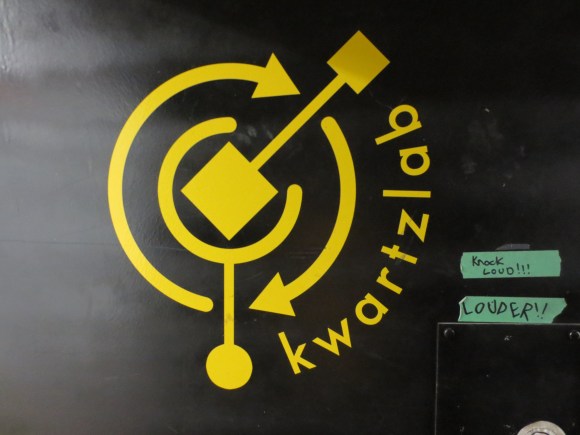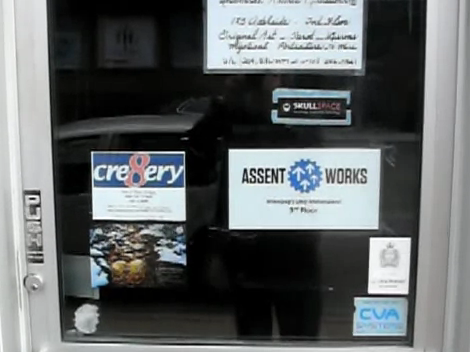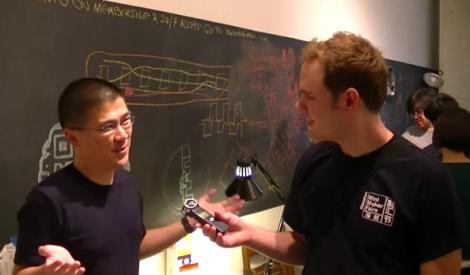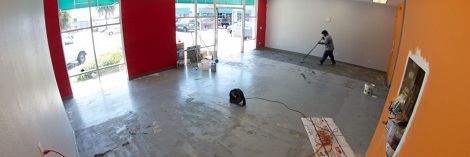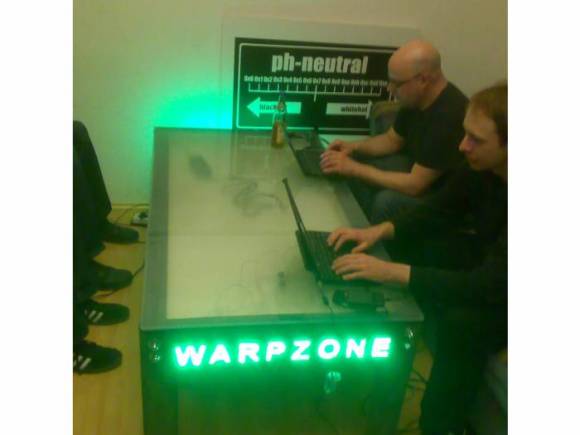
Members of the Warp Zone hackerspace wanted a coffee table that was beyond ordinary. They ended up pouring a concrete base for the glass top (translated). There were several things to address during the design. First off, they wanted to integrate LEDs in the concrete sides. Some consideration had to be made for portability as concrete is very heavy. The final piece of the puzzle was deciding what kind of hardware to place beneath the frosted glass.
The legs were designed with a large cut-out area to keep them as light weight as possible. The cross piece has a set of voids spelling out the name of the hackerspace with some green LEDs. This was accomplished by placing foam cut-outs of each letter in the forms before for concrete was poured. They sealed around each letter with silicone, but still had some seepage most likely caused when jostling the form to help remove air bubbles. Straws were placed in the foam to allow a cable pass through for the electronics. After everything was in place they filled the voids with hot glue to act as a diffuser.
There aren’t a lot of details about the RGB LEDs under the frosted glass. But you can see the light show they produce in the clip after the break.
Continue reading “A Concrete Table With A Little Blinky Built In”

